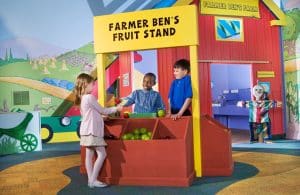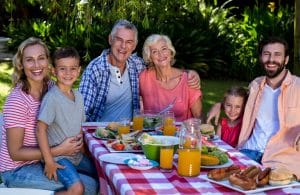Did you know February is National Children’s Dental Health Month?
Family Times recently talked to Qasha Diaz, a lead dental assistant at Pediatric Dentistry & Family Orthodontics in Fayetteville, about some things you can do to keep your child’s teeth healthy – every month of the year.
This interview was edited for length and clarity.
1. Can you tell me a little about your background?
I was going to school for student teaching, and I’ve always had a passion for dentistry. When my daughter was born in 2008, they were laying off a bunch of student teachers, so I took a little break and really thought about what I wanted to do. I went to the BOCES program for dental assisting. At first, I didn’t think I wanted to work in pediatric dentistry, then I started in an office and absolutely loved it. I’ve been at this practice for almost six years.
2. Why is good oral health so important?
Cavities can cause life-threatening infections. It can be restless nights; it can be pain. For chewing, for growth and development. The alignment of the teeth. It’s just not dentistry; we look at the airway, breathing concerns. We look at the tongue attachments, the lip attachments. We also focus on speech. We work with a lot of speech pathologists.
3. When should children visit the dentist for the first time?
Our recommendation is by their first birthday – or when their first tooth erupts.
How can parents help ease any anxiety about these visits?
There are a lot of books and cartoons, like Dora the Explorer and Doc McStuffins, that have little episodes in regard to the dentist. YouTube channels. And honestly, it’s introducing that toothbrush, introducing that floss. A lot of times, the teeth aren’t touching where you really need to floss, but it’s creating those good habits. It’s easier to introduce it at a younger age and have it become a part of their daily routine than when they’re five and they’ve never had it done and then introduce it.
4. How early should parents start brushing their child’s teeth?
We recommend that breastfeeding parents take a damp cloth and wipe the baby’s mouth out; it gets the child accustomed to that happening. When the first tooth erupts, brush with a fluoride toothpaste – it all depends on how old they are for the amount. The size of a grain of rice is what we would recommend starting with.
At what age should children be able to brush their teeth on their own?
Typically, it’s around the time they can start tying their shoes. We do recommend supervision at all times. A lot of children don’t reach back to the six-year molars when they start to erupt.
5. Is there anything parents should consider when choosing a toothbrush, toothpaste, or mouthwash for their child?
Toothpaste with fluoride, a fluoride rinse, and a soft-bristled toothbrush.
Are there any advantages of using an electric toothbrush?
The motorized spin brushes kind of mimic the pro-v heads that we utilize here at the office, and it helps some kids who don’t have that dexterity.
6. Aside from brushing and flossing, what else can be done at home to protect teeth?
Limit sports drinks and sodas. We typically recommend that if you have to have something other than water, have it at mealtime. That’s when your body is producing the saliva to wash away those acids and bacteria. Eat healthy snacks. Avoid things that are going to get stuck between grooves because the bristles of the toothbrush don’t get into those grooves. Chips, crackers, fruit snacks, things like that, you want to try to avoid those at all costs.
What about for children and teens who are playing sports?
Mouth guards. We definitely recommend mouth guards for soccer, hockey, basketball. Any intensive sport.





